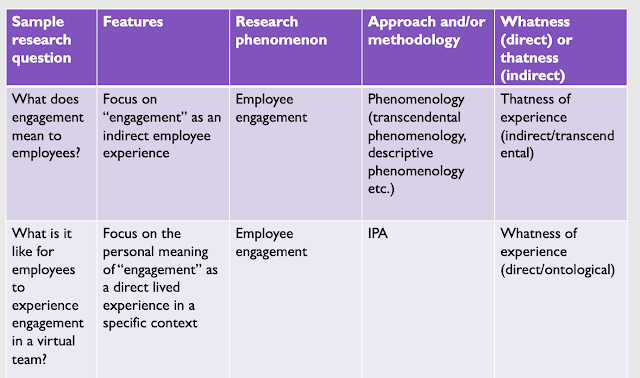Use of IPA in Healthcare Research and Qualitative Data Analysis
An Interdisciplinary Approach
By
Dr. Anil Behal
Introduction
Since its inception in the mid to late 90s, “Interpretative Phenomenological Analysis,” also known as (IPA) has come to be widely recognized as the one of the most thorough and pragmatic turnkey approaches for conducting phenomenological research. It’s not surprising, that given its development by a team of health psychologists in UK, led by Dr. Jonathan Smith, IPA is most widely used in the field of health psychology and medical sciences in order to explore and understand novel phenomena such as “what it’s like for patients to suffer from chronic lower back pain or depression,” or even something so extreme and alarming as “what it’s like for an individual to get tested and learn for the very first time that his blood work has come back positive for the HIV virus.”
These and other novel research questions can be framed both, ontologically and transcendentally, depending on the study phenomenon that is being researched, and whether one is pursuing a participant’s “lived experienced,” or is the study more about generically understanding the phenomenon through an individual’s indirect experience. More on that later in this paper.
It’s important for researchers attempting to deploy IPA, to first understand what IPA is not. It is not a quantitative approach or one that is steeped in positivist science. So, while it is scientific and structured on one hand, what we are dealing with here is “human science” and not natural science. It is not experimental, and laboratory based. IPA is about human experience at its deepest level of pathos. It is about understanding the essence of a study phenomenon. It is about “meaning making” and “sense making.” This should not be confused with quantitative studies that have to do with trends, patterns, scales, and preferences. The goal in IPA is not to hypothesize, define, validate, replicate, refute, theorize or taxonomize data. It is not to discover grand theories. It is simply to allow the study phenomenon to reveal itself in its most primordial and originary forms, to you as researcher. As an inductive approach, it is pre-reflective, pre-theoretical, and somewhat polemic and convoluted.
While teaching doctoral students and faculty, I am sometimes asked the question: “Can we use IPA to understand someone’s experience in the ‘here-and-now,’ as in the present?” The answer is no. IPA is a retrospective (past) account of a participant’s pre-reflective lived experience as it is recounted and narrated in the present. The researcher is trying to make sense of a participant who is trying to make sense of the study phenomenon. As an example, when we ask a participant what it is like to suffer from chronic lower back pain, we are asking someone to share their innermost personal experience with us. As researchers, we are trying to make sense of how they are trying to make sense of lower back pain. So, the phenomenon of “chronic lower back pain” is being understood through 2 lenses: the participant and the researcher. We call this the “double hermeneutic.” But, chronic lower back pain may or may not be the true study phenomenon. It may well be that the researcher is trying to understand a different overarching theme, such as, “what is the impact of chronic lower back pain on one’s emotional or physical well-being, including the distress it can cause with regards to making a living and earning an income?
Theoretical framework
IPA is a multidisciplinary approach that rests on three theoretical pillars, namely:
1. Phenomenology: Understanding the essence of a phenomenon from the first-person point of view. It is about “intentionality,” i.e. it is directed toward something specific. Major theorists: Husserl, Heidegger, Sartre, and Schutz.
2. Hermeneutics: Interpretation of text, be it written, verbal, or non-verbal (Gadamer, Ricoeur, and Dilthey)
3. Idiography: Understanding an individual’s “retrospective” account on their own terms and in their own words with very little intrusion or direction by the researcher. Every participant is a separate entity for the purpose of research.
Sample research questions
If you look at the first column (sample research question), the first and second rows have somewhat similar sounding research questions (RQ). But on closer examination, you will notice that while the phenomenon being studied is “employee engagement” in both cases, the first question is pointing to an indirect experience of employees, while the second question is specifically directed toward an employee’s direct lived experience of existential import, in a virtual team setting. IPA, as deployed in the second case, is a sense-making, meaning-making research endeavor involving close and personal emotional experience that is pathos-laden. It is not experience per se, but rather experience that is idiographically focused (with specificity and particularity), and not nomothetic in nature. Each participant’s account is treated on its own terms with its own novel importance.
As an inductive approach, IPA typically involves collecting and analyzing data received through individual semi-structured, in-depth interviews, but in certain situations, focus groups may be used. The latter is a more involved technical approach and is not suitable for all IPA studies. Because IPA deals with “thick” (highly emotional) data sets, discursive accounts, evocative descriptions, and pathos-laden stories, some researchers have argued that focus group interviews may have the potential of watering down the emotional content which is so critical to IPA. The researcher conducting such a study, refrains from any attempt to hypothesize, validate, refute, define, theorize, or taxonomize the data. The focus is on “abstemious reflection,” meaning that one abstains from making suppositions, theoretical suggestions, and other endeavors that may involve a premature understanding of the phenomenon based on what one already knows about it. The true focus of IPA studies is to allow a research phenomenon to reveal itself through stories and narratives.
Why pursue IPA?
IPA is a qualitative approach to conducting data analysis when the focus of the study is phenomenological. It is a novel interpretative approach widely used in the fields of health psychology and medicine but can be successfully deployed in other social science streams as well, where understanding and exploring the essence of a phenomenon is of importance. A researcher using IPA does not attempt to validate or invalidate a participant’s unique experience or call into question the facticity of such accounts. It is not the researcher’s job to question whether a participant may be telling the truth. It is not to call into question, the motives of a participant. As long as an interview is focused on shedding light on the study phenomenon, all retrospective data collected are rich and valuable.
Interviewing and data collection
IPA typically uses small corpuses, of say 6-7 participants who have been purposefully selected for the study. The reason for using a small sample is that IPA analysis goes deep and not wide. While the participants’ accounts may at times, appear to be rambling and discursive, the depth comes from making sense of, and analyzing intricate streams of consciousness which may seem disjointed at times. The analysis is conducted on several levels: conceptual, linguistic, and subjective, paying close attention to convergences and divergences. The goal is to collect data while “bracketing” (setting aside the researcher’s theoretical framework, biases, suppositions, and assumptions regarding the phenomenon). The same process of bracketing is also used while analyzing and making sense of data as it relates to the study. The emphasis in IPA is on the co-creation of knowledge with its attendant understanding and interpretation. The researcher assumes a “paradoxically bilateral” relationship with the participant. She plays an active role in the interview process, while recognizing that the voice of the participant is of paramount importance, and that she is both impacting and being impacted by the interview.
IPA: An inductive approach
1. IPA deploys inductive reasoning (proceeds from particular/specific cases to a broader generalization). This is not be confused with generalization as in quantitative studies.
2. Philosophically, inductive reasoning is far more nuanced and uncertain than deductive reasoning which is typically in the domain of quantitative studies. IPA does not attempt to prove, disprove, hypothesize, validate, theorize, or describe something.
3. IPA involves the “hermeneutics of description/suspicion as posited by Paul Ricouer. The researcher is an active participant who does not direct or otherwise intrude in the interview process. The focus is on the participant’s account and individual narrative. The researcher pays attention to both, what is being said and not said in the interview process.
Data analysis
The following matrix chart provides a step-by-step turnkey overview of the data analysis process:

